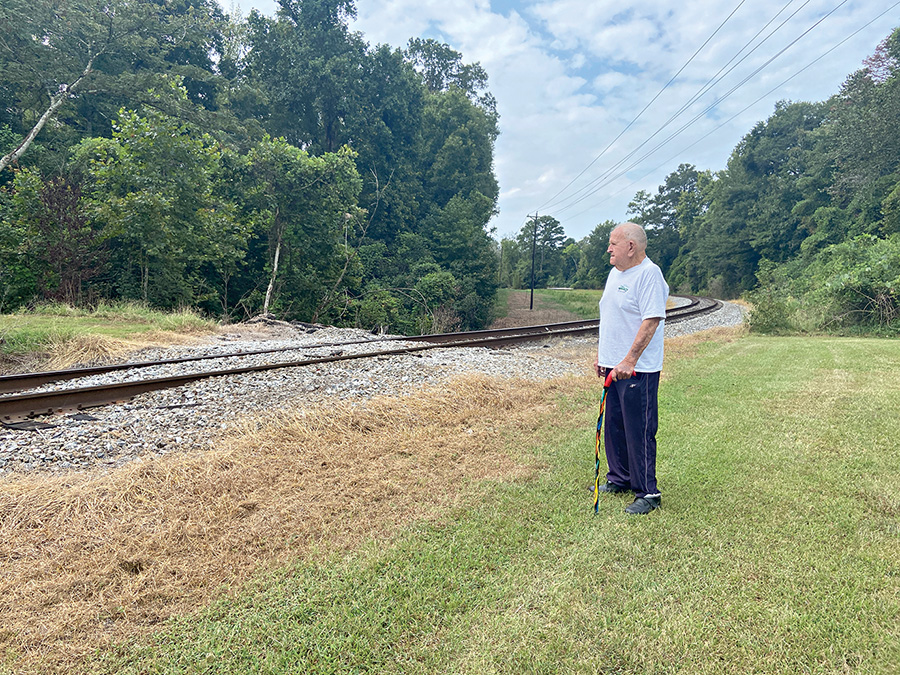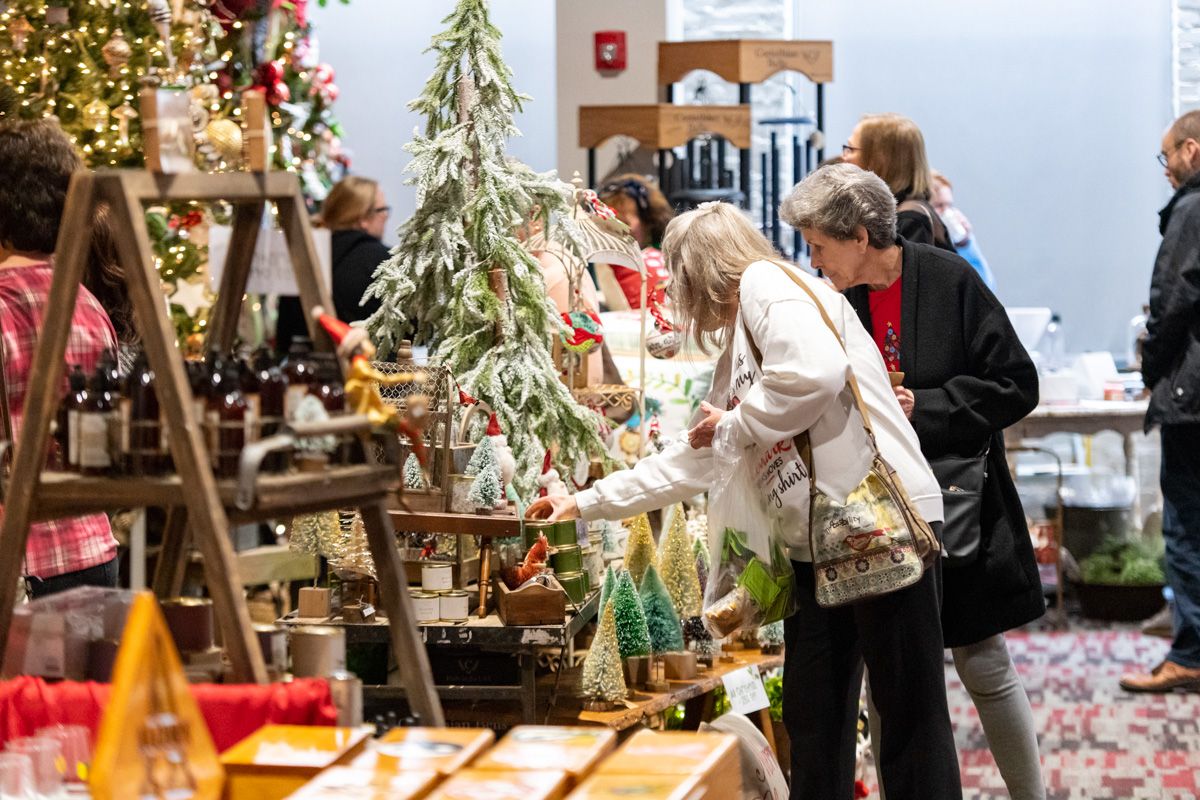For more than 50 years, Ed Atkins crossed a railroad track that cut through his property on Black Creek Road to access 4.9 acres of his hunting and fishing land, just behind his house.
But in 2021, Luxapalila Valley Railroad — owned by Genesee & Wyoming Inc. — began parking its train from the east to west end of his property on the weekends, effectively cutting his land in half.
When he asked a company representative to unhook just one rail car so he could pass through, he was told not to cross the track or he could be charged with trespassing, whether the train was there or not.
“We had never heard a word from (the railroad) until then,” said Atkins, 85. “… I tried to call them, and they told me, ‘Sir, I’m recording your voice.’ I said, ‘I certainly am glad because I like to hear myself talk, so say something that’ll make me nervous.’ That’s when they told me they’d get me for trespassing across that land.”
Just two years later, after seeking help from the Lowndes County Board of Supervisors and other local government officials, he now plans to take his case before the Lowndes County Chancery Court and hopes to receive an easement for the property, which does not currently exist in court records, he said.
An easement is a mutually agreed or court-appointed access point where one property owner may cross through a portion of another property to access their land.
Atkins’ deed, obtained in 1970, gives the rail company right-of-way to cross through the middle of his 6 acres. It does not specify an easement for Atkins to cross the rail.
“My family has owned this land for more than 100 years,” Atkins said, who has owned it himself for about half that time. “… We have had an understanding with (the railroad) for that long, so I can’t see why I now have to pay (a lawyer) just to get what is mine.”
The track that stretches across Atkins’ property was initially built in 1894 by the Southern Railway Company, which Atkins said had an “understanding” with his family. Southern Railway sold it to Columbus and Greenville Railway in the 1920s. C&G sold those rails to the Luxapalila Valley Railroad in 1996. That company was absorbed into Genesee and Wyoming Railroad Services in 2008, according to deed records.
Atkins said since the company told him not to cross the track, he had come to an agreement with his neighbor, Bernice Brown, to use a rail crossing on her land. The railroad has also blocked that crossing.
Trying to make a deal
Federal Railroad Administration Public Affairs Officer Warren Flatau told The Dispatch there are no federal or state laws regulating where a private rail company can store trains or block private crossings it owns.
“There is no federal prohibition on storage of rail cars on mainline track or sidings,” Flatau said. “(the railroad company) may do so for several legitimate commercial and operational reasons. Ideally, the railroad should be a good neighbor and work with the property owner to achieve a mutually acceptable agreement.”
Lowndes County Board of Supervisors Attorney Tim Hudson said he assisted Atkins several times in 2022 to try to reach an agreement with the railroad company.
“I’ve communicated with the railroad, and I don’t think we’ve been able to get any success,” Hudson said. “They take the position of ‘That’s our land and we do what we want to do, and he doesn’t even need to come on or cross the tracks.’”
A Genessee and Wyoming spokesperson told The Dispatch via email that the company had made attempts to reach an agreement with both Atkins and Brown to give them access to the private rail crossing, if they provided proof of basic liability insurance through their homeowners’ policy.
“The crossing adjacent to Ms. Brown’s property is private property, but (we) are willing and ready to assist in granting access if official proceedings are followed,” the spokesperson said. “Neither Ms. Brown nor Mr. Atkins has furnished (us) with an agreement for legal access.”
The company did not respond by press time to questions about why it stores the train near Atkins’ property or what the “official proceedings” are.
Atkins denied ever receiving such correspondence from the railroad company on a mutual agreement.
“They told me they’re going to arrest me for trespassing,” he said. “That’s all.”
Filing for easement with chancery court
Retired Chancery Court Judge Jim Davidson said Atkins could plead his case to the court based on the precedent he and his family have accessed that land by crossing the track at a specific point since owning the property.
Chancery court deals with land records and cases involving real property.
“If he has been doing that for a lengthy period of time, he can go to chancery court and ask for a prescriptive easement,” Davidson said.
A prescriptive easement is a document that gives a landowner the right to cross through another’s land to access their own property without the permission of the second party, Davidson said.
Davidson added it is also possible that the two parties may have signed a private easement when the track was built, but it was never filed. The court has an obligation to hear Atkins’ case and assess the situation but only if Atkins brings it forward, Davidson said.
“If it turns out to be correct that he has accessed it across not his neighbor’s land but the point that he has been accessing it for a number of years on his land, and all of a sudden they put a train there and they said, ‘No, you can’t do this anymore,’ he would ask the court to grant him prescriptive easement,” he said. “Then they would have to move that train off that property and allow him access back and forth.”
Editor’s note: This story has been updated to better reflect the ownership of the railroad in question.
You can help your community
Quality, in-depth journalism is essential to a healthy community. The Dispatch brings you the most complete reporting and insightful commentary in the Golden Triangle, but we need your help to continue our efforts. In the past week, our reporters have posted 43 articles to cdispatch.com. Please consider subscribing to our website for only $2.30 per week to help support local journalism and our community.







